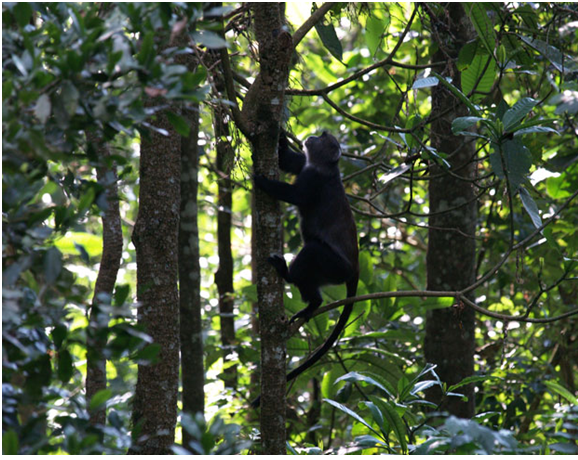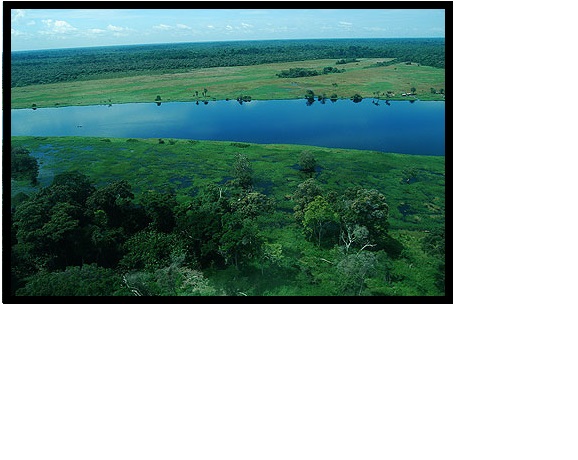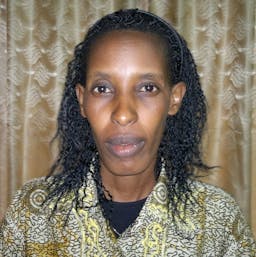BEAUTE CACHEE DE LA RDC
Jan 21, 2015
First story







La République démocratique du Congo est le troisième plus vaste pays d’Afrique derrière le Soudan et l'Algérie et le plus peuplé d'Afrique centrale. C'est le pays le plus peuplé de la francophonie. Elle est également appelée « Congo-Kinshasa » pour la différencier de son voisin la République du Congo ou « Congo- Brazza ville, Il s’étend de l’océan Atlantique au plateau de l’est et correspond à la majeure partie du bassin du fleuve Congo. Le nord du pays est un des plus grands domaines de forêt équatoriale au monde, l’est du pays borde le grand rift est-africain, domaine des montagnes, des collines, des grands lacs mais aussi des volcans. Le sud et le centre, domaine des savanes arborées, forment un haut plateau riche en minerai. À l’extrême ouest, une quarantaine de kilomètres au nord de l'embouchure du fleuve Congo s’étale une côte sur l’océan Atlantique. Le pays partage ses frontières avec l’enclave de Cabinda (Angola) et la République du Congo à l’ouest, la République centrafricaine et le Soudan au nord, l’Ouganda, le Rwanda, le Burundi et la Tanzanie à l’est, la Zambie et l’Angola au sud.
Son économie est principalement du secteur primaire (agriculture et exploitation minière). Le français est sa langue officielle et quatre langues bantoues (kikongo, lingala, tchiluba, swahili) sont des langues nationales.
La danse et la musique font partie intégrante de la tradition et de la vie quotidienne, la musique congolaise est celle qui s'est le plus propagée dans toute l’Afrique.
En raison de sa grande superficie, de ses énormes richesses et de son importante population, la République Démocratique du Congo est l’un des «géants» de l’Afrique, avec l’Égypte, le Nigeria et l’Afrique du Sud au centre de l'Afrique. Elle est traversée par l'équateur et comprend trois climats : le climat équatorial, le climat tropical et le climat de montagne.
Elle possède deux fleuves, dont le Congo et le deuxième plus grand fleuve d'Afrique, qui la traverse presque totalement, et des rivières.
Dans le détail, la République Démocratique du Congo possède un important potentiel de ressources naturelles et minérales.
L’agriculture reste le principal secteur de l’économie. Les principales ressources agricoles sont le café, le bois mais, manioc, riz, haricot et le caoutchouc.la majeure partie de la population reste alors actif dans l’agriculture .
Voici une liste des ressources minières par province :
Diamant : Kasaï Oriental, Kasaï Occidental, Bandundu, Équateur, Province Orientale.
Or : Province Orientale, Maniema, Katanga, Bas-Congo, Nord-Kivu, Sud-Kivu, Équateur.
Cuivre : Katanga.
Étain : Katanga, Nord-Kivu, Sud-Kivu, Maniema.
Colombo tantalite (Coltan) : Nord-Kivu, Sud-Kivu, Katanga, Maniema.
Bauxite : Bas-Congo.
Fer : Banalia, Katanga, Luebo, Kasaï-Oriental.
Manganèse : Katanga, Bas-Congo.
Charbon : Katanga.
Pétrole : Bassin côtier de Moanda (en exploitation), la Cuvette Centrale, Ituri, Bandundu (indices)
Gaz méthane : Lac Kivu
Schistes bitumeux : Mvuzi (dans le Bas-Congo)
Cobalt : Katanga.
A la richesse de foret , demeurées vierges , préservant leur beauté naturelle, s’ajoutent toutes les merveilles du monde concentrées dans un seul pays, principalement dans les nombreux parcs nationaux, véritables réserves d’espèces sauvages de toutes natures, les fleuves et leurs affluents , ainsi qu’à travers les impressionnantes grottes et les innombrables chutes qui jalonnent le Congo.
La RDC est parmi les 10 pays de la méga biodiversité du monde avec 480 espèces de mammifères, 565 espèces d’oiseaux, 1 000 espèces de poissons, 350 espèces de reptiles, 220 espèces de batraciens et plus de 10 000 angiospermes dont 3 000 seraient endémiques. Elle a une faune naturelle exceptionnelle (on y trouve tous les grands animaux de l’Afrique) et a des espèces rares.
Le Congo constitue la terre du tourisme part excellence, compte tenu aussi bien de diversité de ses climats, de la beauté et de la richesse de son paysage que de la pluralité des possibilités qu’il offre.
L’Institut congolais de la conservation de la nature gère sept parcs nationaux, dont celui de la Salonga, sur l’Equateur, considéré comme la plus grande réserve forestière de la planète.
La RDC dispose d'abondantes ressources en eau, des lacs poissonneux, notamment le lac Tanganyika (plus grand que le Burundi) le plus poissonneux du monde.
English translation by community member heidigjr
The Democratic Republic of the Congo is the third largest country in Africa, behind Sudan and Algeria, and the most populous in Central Africa. It is the most populated francophone country. It is also known as "Congo-Kinshasa" to distinguish it from its neighbor, the Republic of the Congo, or "Congo-Brazzaville". The DRC stretches from the Atlantic Ocean to the eastern plateau and a large part of it is made up by the Congo Basin. The northern part of the country is home to one of the largest area of rainforest in the world, the eastern border, the great Eastern Rift Vally, an area of mountains, hills, lakes and volcanoes. The south and the centre of the country are areas of wooded savannah that forms a mineral rich plateau. In the extreme west, 40 kilometres north of the Congo River mouth is the coast of Atlantic Ocean. The country shares its borders with the enclave of Cabinda (Angola) and the Republic of the Congo to the west, the Central African Republic and Sudan to the North, Uganda, Rwanda, Burundi and Tanzania to the east, and Zambia and Angola to the south. The RDC's economy is mainly in the primary sector (agriculture and mining). French is the official language and the four Bantu languages (kikongo, lingala, tshiluba, swahili) are national languages.
Dance and music are an integral part of tradition and of daily life - Congolese music is one of the most widespread throughout Africa. Due to its large size, its enormous wealth and its large population, the Democratic Republic of Congo is one of the African "Giants", along with Egypt, Nigeria and South Africa, at the heart of Africa. The equator passes through the DRC and she therefore consists of three climates: equatorial, tropical and alpine.
She has two rivers, of whom the Congo and its tributaries, the second longest river system in Africa, run through almost completely.
In greater detail, the Democratic Republic of the Congo possesses great potential in natural resources and minerals.
Agriculture remains the main economic sector. The main agricultural resources are coffee and wood but cassava, rice, beans and rubber. A large part of the population therefore remains active in the agricultural field.
Here is a list of mineral resources by province:
Diamond: East Kasai, West Kasai, Bandundu, Équateur, Oriental
Gold: Oriental, Maniema, Katanga, Bas-Congo, North Kivu, South Kivu, Équateur
Copper: Katanga.
Tin: Katanga, North Kivu, South Kivu and Maniema.
Colombite-tantalite (Coltan): North Kivu, South Kivu, Katanga and Maniema.
Bauxite: Bas-Congo.
Iron: Banalia, Katanga, Luebo, East Kasai.
Manganese: Katanga, Bas-Congo.
Coal: Katanga.
Oil: Coastal basin of Moanda (in operation), the Cuvette Centrale, Ituri, Bandundu (indices)
Methane gas: Lake Kivu
Oil shales/ schist: Mvuzi (in Bas-Congo)
Cobalt: Katanga.
Punctuating the Congo is a wealth of untouched virgin forest, with their natural beauty preserved, plus all of the wonders of the world. This is all concentrated in a single country, mostly in the many national parks, untouched reservations of all kinds of wildlife, the rivers and their tributaries, as well as the impressive caves and the countless waterfalls.
The DRC is among the top 10 countries for mega-biodiversity, with 480 species of mammals, 565 species of birds, 1,000 species of fish, 350 species of reptiles, 220 species of amphibians and more than 10,000 angiosperms, of which 3,000 will become endemic. She has exceptional natural fauna (where one can find all the great animals of Africa) as well as rare species.
The Congo represents an excellent area for tourism, given the diversity of its climate. The beauty and richness of its landscape lends itself to all of the opportunities it offers.
The Institut Congolais pour la Conservation de la Nature (ICCN) manages seven national parks, including Salonga on the equator, which is considered the largest preserved forest on the planet.
The DRC has abundant water resources, with lakes full of fish, including Lake Tanganyika (which is larger than the Burundi), with the most fish in the world.




